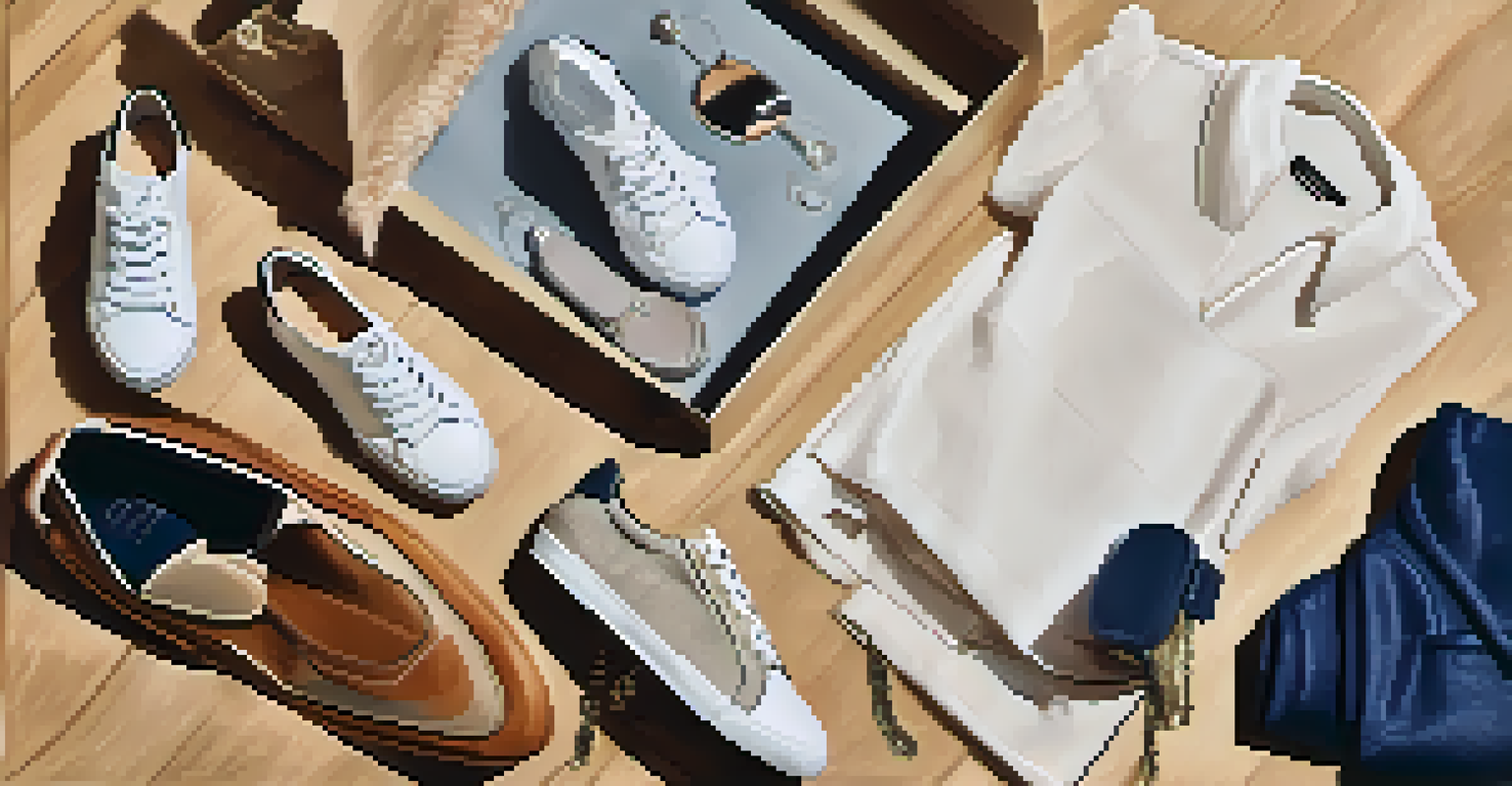Collaborations: A Key Strategy for Fashion Brand Success

Understanding the Power of Collaborations in Fashion
Collaborations in the fashion industry have become a buzzword, but what does it really mean? Essentially, it involves two or more brands working together to create something unique, whether it's a limited-edition line or a special collection. This strategy not only blends different aesthetics but also taps into the strengths of each brand involved, creating a win-win situation.
Collaboration is the essence of life. The wind, bees, and flowers work together to produce the fruits of life.
A great example is the collaboration between Adidas and designer Stella McCartney. By combining McCartney's sustainable ethos with Adidas' sportswear expertise, they created a collection that appealed to eco-conscious consumers while still maintaining performance standards. This synergy showcases how collaborations can attract diverse audiences and enhance brand visibility.
Ultimately, understanding the dynamics and potential of collaborations can set the stage for groundbreaking innovations in fashion. When brands align their visions and goals, they can create products that resonate more deeply with consumers, making collaboration an essential strategy for success.
Benefits of Collaborations for Fashion Brands
The benefits of collaborations extend far beyond just a fresh collection. One major advantage is the ability to reach new audiences. When you partner with another brand, you essentially gain access to their customer base, which can lead to increased exposure and sales.

Additionally, collaborations often generate buzz and excitement within the industry. Think of the frenzy that surrounds a new capsule collection from a famous designer paired with a high-street brand. This excitement can lead to heightened media coverage and social media engagement, amplifying brand awareness.
Challenges in Brand Collaborations
Aligning values and maintaining identity are key hurdles brands must navigate in collaborations.
Lastly, collaborations can foster innovation. By combining creative forces, brands can experiment with new ideas, materials, and techniques that they might not explore on their own. This spirit of innovation can lead to unique products that stand out in a saturated market.
Challenges Brands Face in Collaborations
While collaborations can bring numerous benefits, they also come with their own set of challenges. One of the primary obstacles is aligning brand values and vision. If the collaborating brands have differing missions or target audiences, the partnership may not resonate well with consumers.
Alone we can do so little; together we can do so much.
Another challenge is maintaining brand identity. Brands must find a balance between blending their styles and preserving their unique essence. Too much compromise can dilute a brand's identity, while too little may alienate customers who expect a certain aesthetic.
Finally, effective communication is crucial. Misunderstandings or misaligned expectations can lead to setbacks or even failure of the collaboration. Open dialogues and clearly defined goals are essential to ensure that both parties are on the same page throughout the process.
Successful Examples of Collaborations in Fashion
To truly understand the impact of collaborations, let's look at some successful examples. One standout is the partnership between H&M and luxury fashion house Balmain. This collaboration brought high-fashion designs to the masses at an accessible price point, generating enormous buzz and long lines at stores worldwide.
Another notable example is the collaboration between Virgil Abloh’s Off-White and Nike. This partnership not only transformed classic sneaker silhouettes but also created a cultural phenomenon that resonated with sneakerheads and fashion enthusiasts alike. The limited-edition releases often sell out within minutes, showcasing the power of a well-executed collaboration.
Collaborations Enhance Brand Reach
Partnering with other brands allows access to new audiences and boosts visibility.
These examples illustrate that when collaborations are executed thoughtfully, they can create immense value for both brands and their customers, proving that teamwork truly makes the dream work in the fashion industry.
How to Choose the Right Partner for Collaboration
Choosing the right partner is crucial for a successful collaboration. Brands should look for partners that complement their strengths and share similar values. This alignment not only enhances the creative process but also ensures a cohesive message that resonates with their audiences.
Additionally, it's important to consider the audience of potential partners. A brand with a significantly different target demographic might not yield the desired results. Conducting market research can help identify partners whose customer bases overlap or align in meaningful ways.
Lastly, brands should assess the partner's reputation and credibility in the industry. A well-respected partner can lend additional clout to the collaboration, while a less reputable one might detract from the overall brand image. Thorough vetting can help ensure a fruitful partnership.
Crafting a Collaborative Strategy for Your Brand
Once you've identified a potential partner, crafting a collaborative strategy is the next step. Start by defining clear objectives: What do you hope to achieve through this collaboration? Whether it’s increasing brand awareness, tapping into a new market, or launching a groundbreaking product, having specific goals will guide the entire process.
Next, outline the roles and responsibilities of each partner. Clearly defined tasks can prevent confusion and ensure that both parties contribute equally to the collaboration. This can include everything from product development to marketing efforts.
Future Trends: Sustainability & Tech
Emerging collaborations are focusing on sustainability and integrating technology to engage consumers.
Finally, don’t forget to plan for post-collaboration evaluation. Assessing the partnership's success can provide valuable insights for future collaborations, helping both brands learn and grow from the experience.
Future Trends in Fashion Collaborations
As the fashion industry continues to evolve, so too will the nature of collaborations. One emerging trend is the rise of collaborations that prioritize sustainability. Brands are increasingly partnering to create eco-friendly products, appealing to a growing base of environmentally conscious consumers.
Another trend is the integration of technology in collaborations. From augmented reality experiences to digital fashion shows, tech-savvy partnerships are reshaping how brands engage with their audiences. These collaborations not only create innovative products but also offer new ways for consumers to interact with fashion.

Lastly, expect to see more unexpected partnerships. Brands that traditionally wouldn’t collaborate are now joining forces, leading to fresh and exciting offerings. These unconventional collaborations can generate significant media buzz and draw in diverse audiences, proving that in fashion, anything is possible.